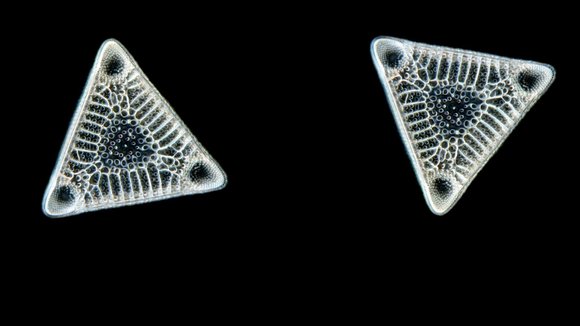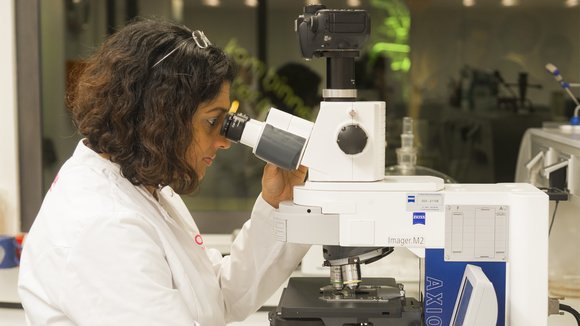Some students will have started a work placement, others are expecting a baby soon and others may simply be focusing on other priorities. It's a shame, of course, but understandable. And yet, some people have been with us since the very start of Micropia and are here every week, working on their individual projects. Many of these projects, in fact, have yet to be displayed in Micropia exhibits!
Take the diatoms, for instance. These are tiny organisms that can be found in a number of surprising places – more than you might think. Did you know, for instance, that they're even in your toothpaste? And if you happen to find a piece of flint: that stone is made entirely of diatoms. Diatoms exist in an enormous variety of the most beautiful colours and shapes. But I'll stop there – I don't want to give away too much. The volunteer who works with these organisms is named Sheba. After earning her PhD (doctorate), Sheba took a job as a publisher for Elsevier. She also became rather smitten with Micropia. Her enthusiasm carries over into her work on the project. Sheba is going to tell you all exactly what she does with those diatoms in the Micropia lab.

Diatoms protect themselves from their enemies by means of a ‘glass house’ surrounding the cell – a strong armour made of silica.
My name is Sheba and I started working at the Micropia laboratory in September 2016. Stepping into a lab again after five years of being away was exciting for me. I had been a scientist for a long time before I left academia, so working in a lab again without the pressure was a perfect way to spend my Friday mornings. My project is to culture diatoms for display in the museum. These little guys are a form of algae and can be found everywhere across the globe. What makes them so interesting is that their cell wall is made out of silica (unlike other organisms). Because of this silica they have the most amazing shapes and sizes and this makes them absolutely beautiful under the microscope.

A microscope allows you to see what is invisible to the naked eye.
Although they grow everywhere in the world, they won’t grow easily in the lab. Diatoms are found in nature in running water, growing with other algae. In order to grow them in the lab, one has to recreate the exact composition of river water. This is harder than it seems, and the medium to grow diatoms in has at least 20 individual components in it. At the moment we have two species of diatoms growing in the lab. We hope to be able to display them (and more) soon, so watch out for the diatoms in the museum!
We think it will be fun to share some of these projects with you in the time to come. It's also a way for us to make the invisible aspects of lab work a little more visible, via the blog. Wouldn't you all like to learn a bit more about the organisms we don't yet have on display in the museum?
See you soon!
